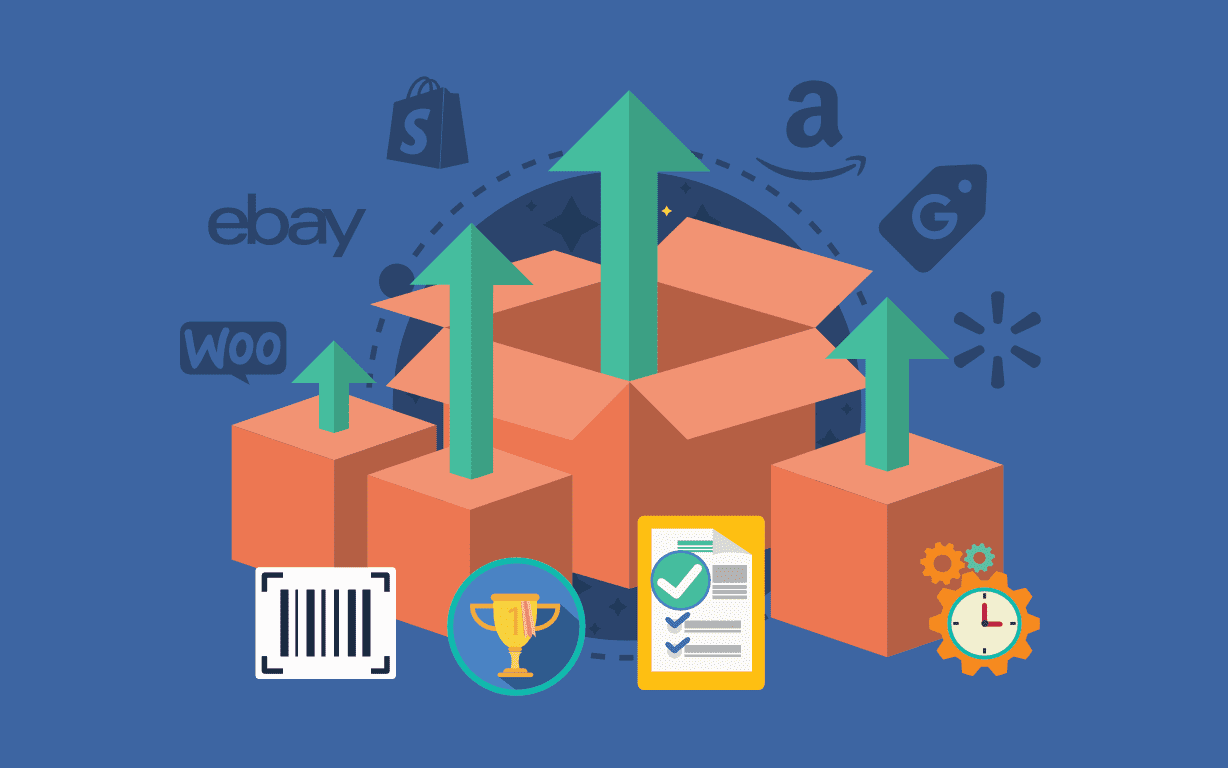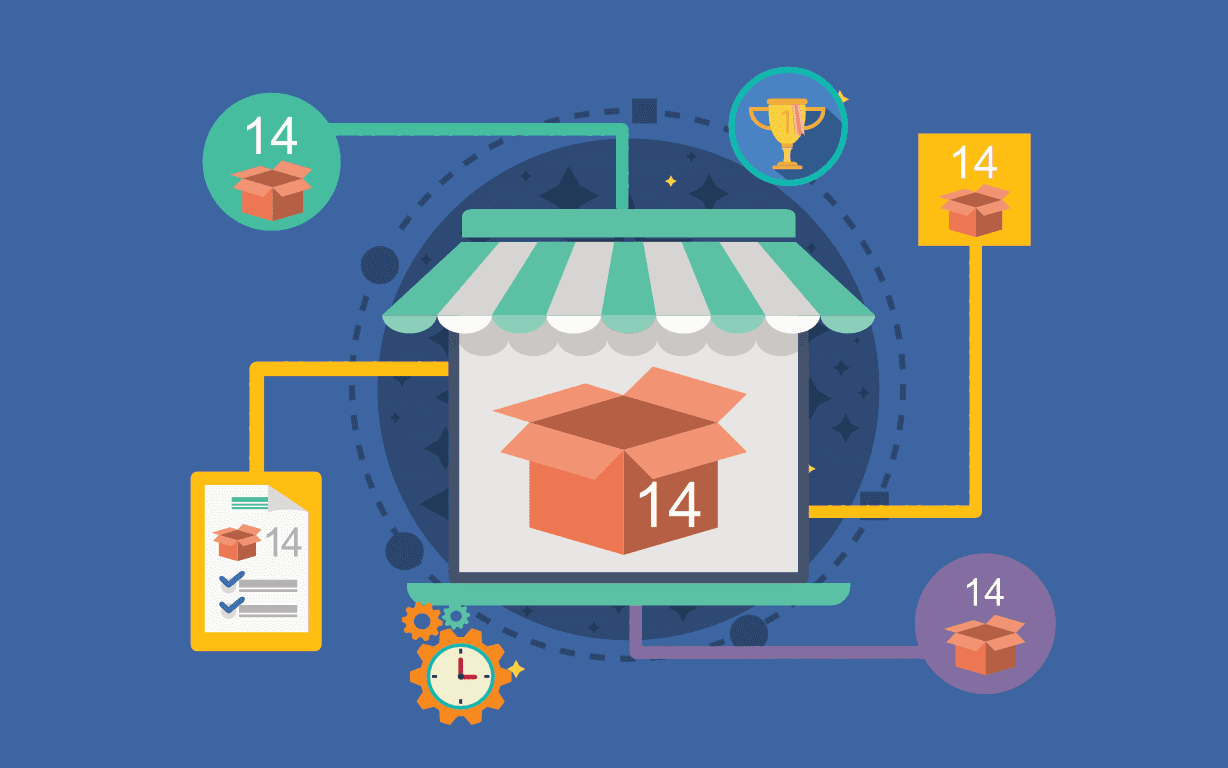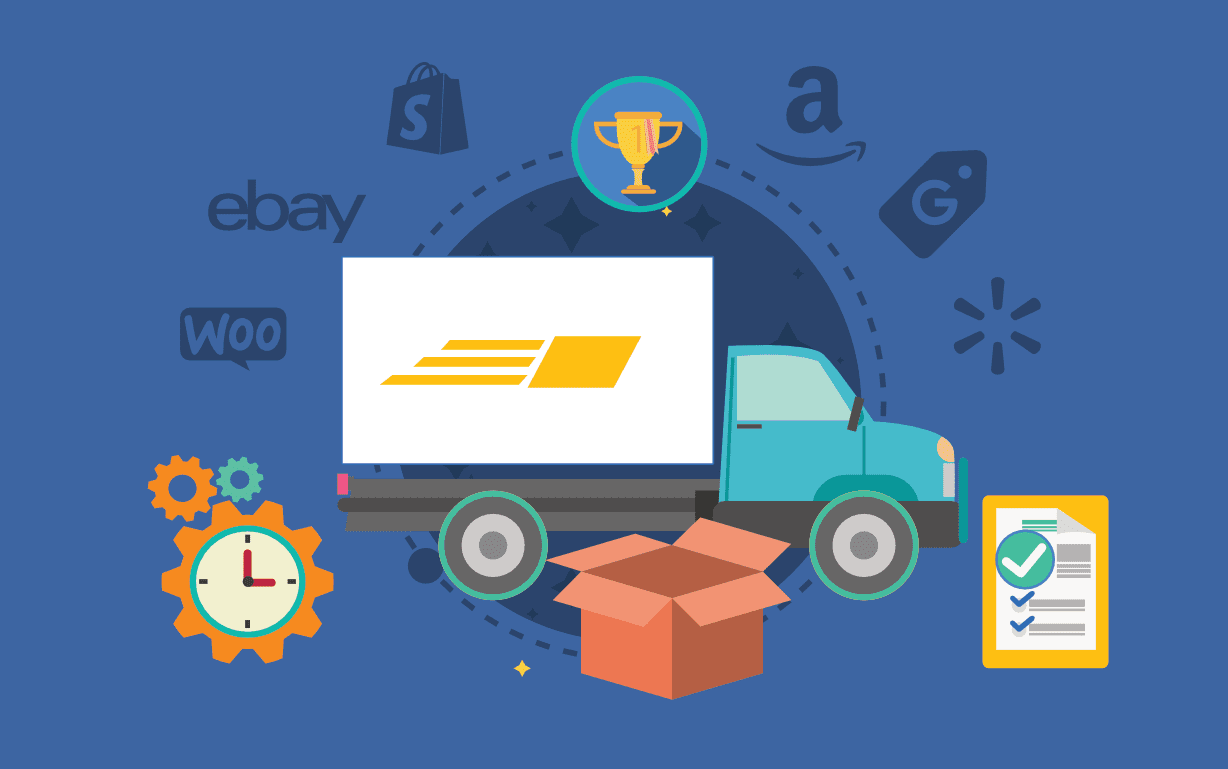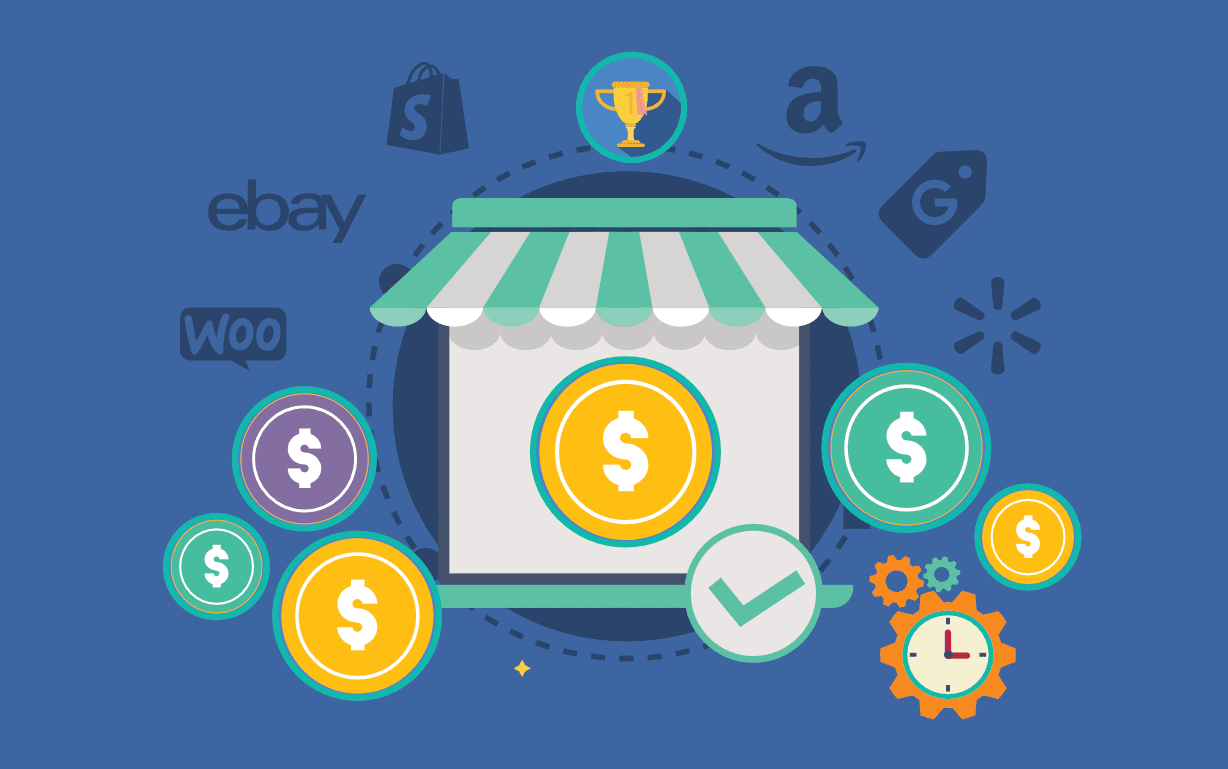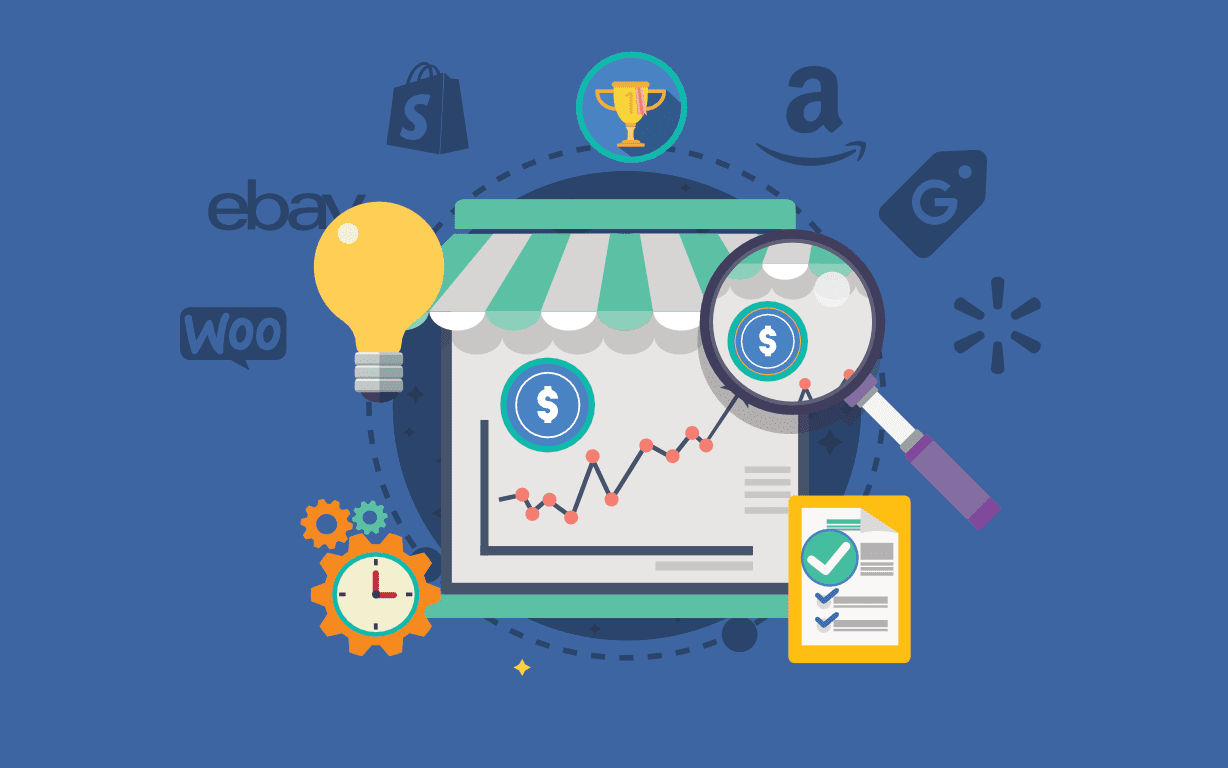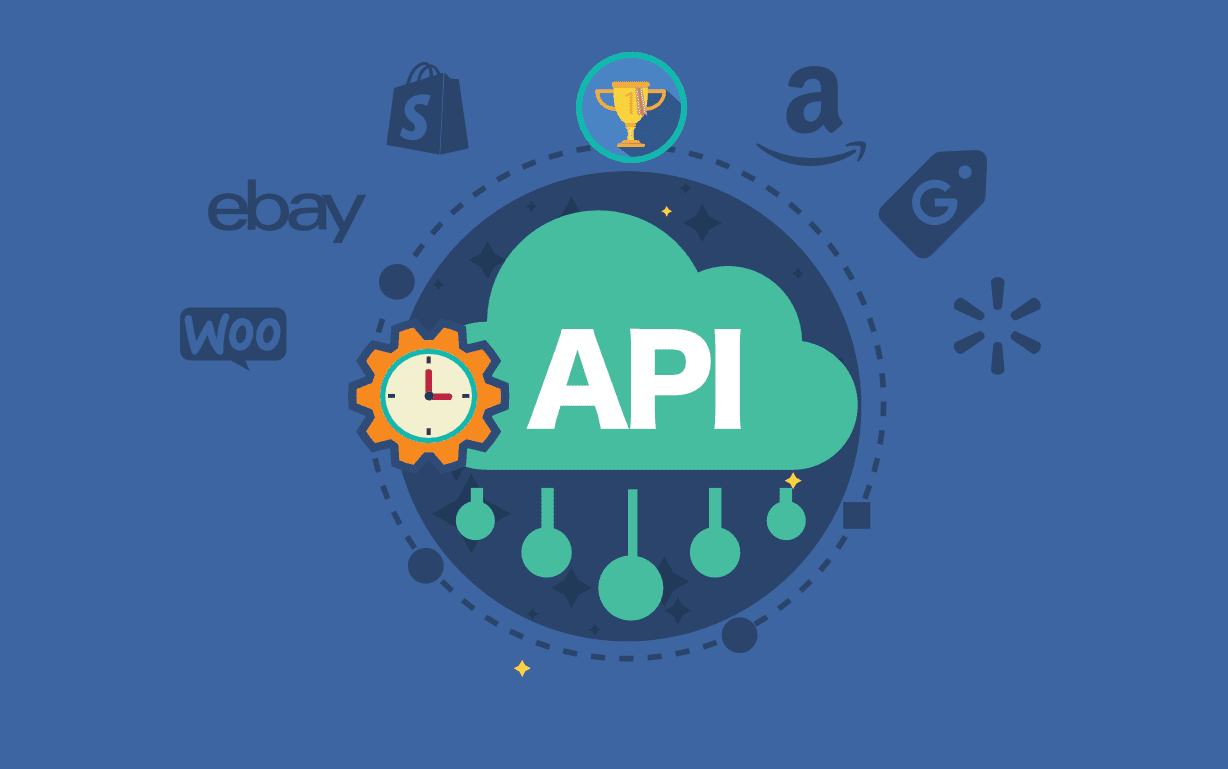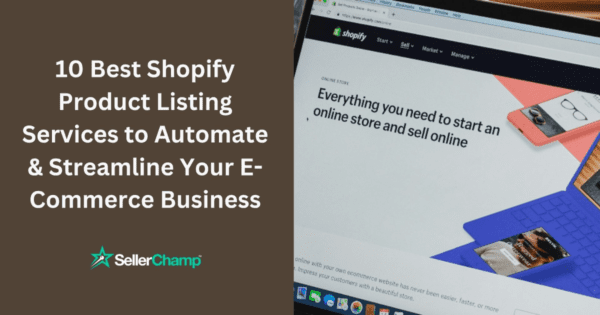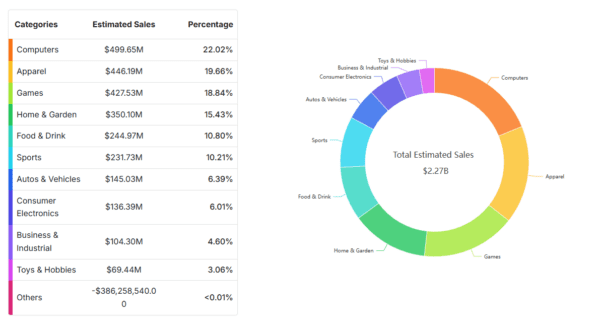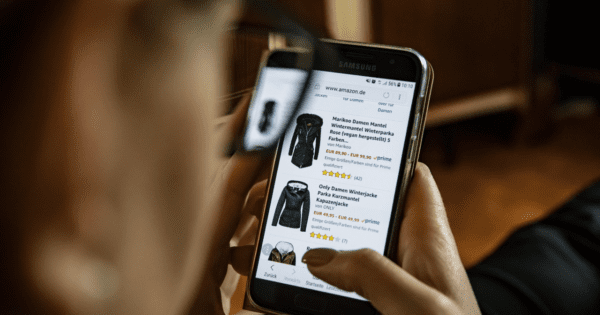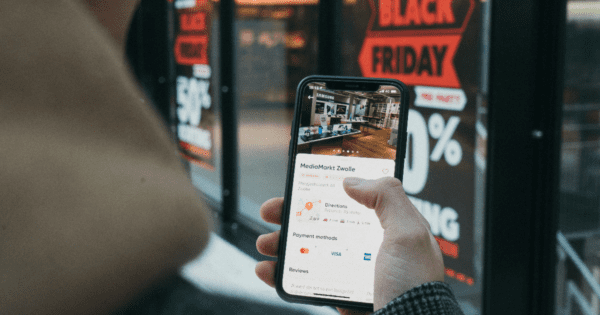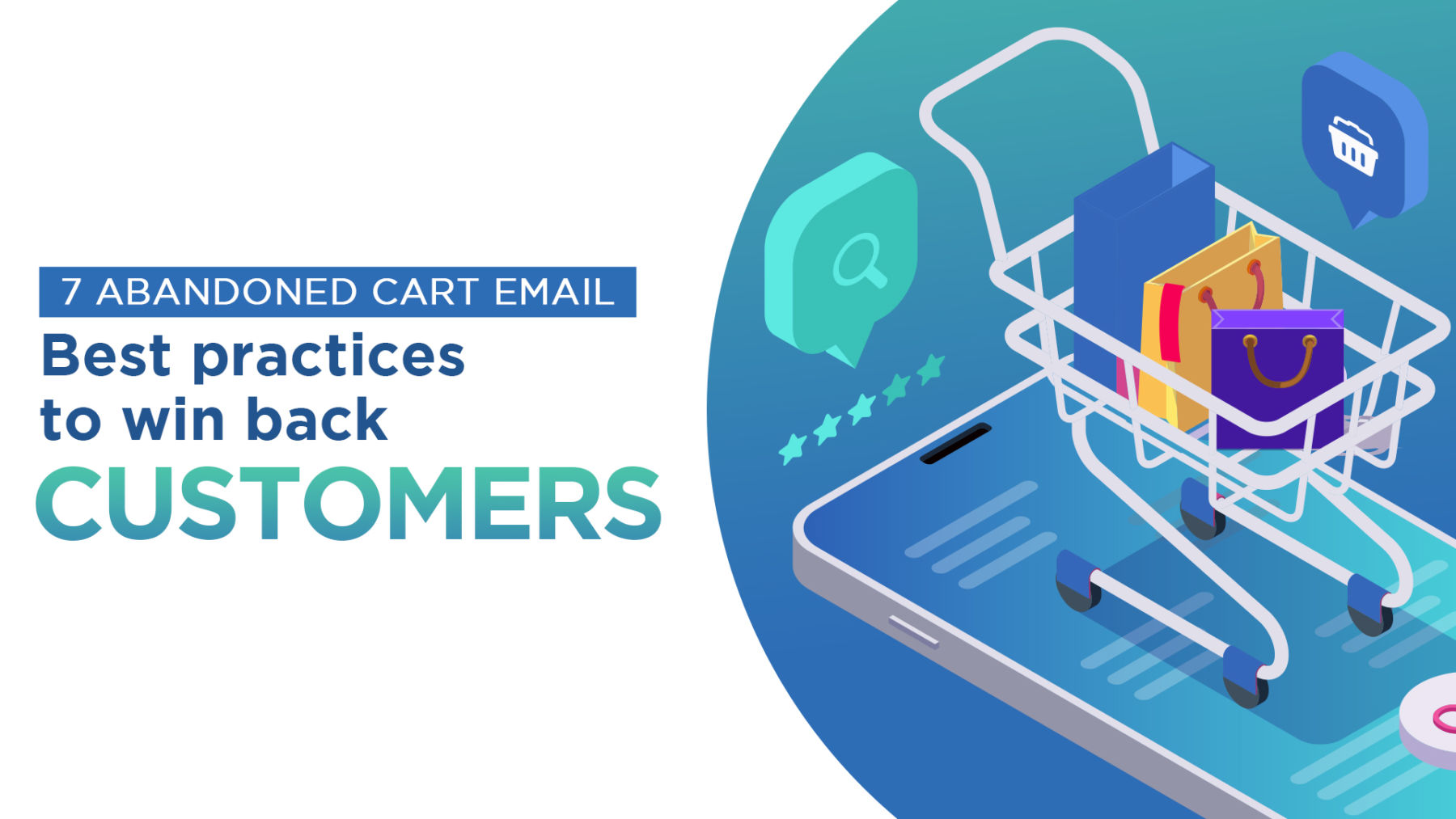
7 Abandoned Cart Email Best Practices to Win Back Customers
Did you know 3 out of 4 worldwide customers who add products to their cart don’t complete the purchase? As surprising as it sounds, the global average cart abandonment rate as of 2021 is 75.52%.
But why does this happen?
There can be multiple reasons behind cart abandonment, including high shipping rates, complicated checkout processes, slow websites, additional costs, or inefficient return processes. And experts recognize that these abandonment rates are only increasing with time.
If not taken care of, shopping cart abandonment can cost your eCommerce business a huge chunk of money, and we are talking around 2 to 4 trillion per year. In addition, the creation of a huge conversion gap is another major drawback experienced by businesses.
Good thing you can transform and recover from this issue by following up with your customers through abandoned cart emails, an effective sales recovery strategy crucial for eCommerce retailers.
This article will take you through the importance of abandoned cart emails and some best practices you can incorporate to win back your customers and prevent revenue losses.
Why are Abandoned Cart Emails Important?
An abandoned cart email or an abandoned checkout email is an automated email sent out to those customers who add items to their cart but abandon your website without completing the transactions.
Here is an example of an abandoned cart email sent by Revolve to their customers suggesting they purchase the items from their cart before they go out of stock.
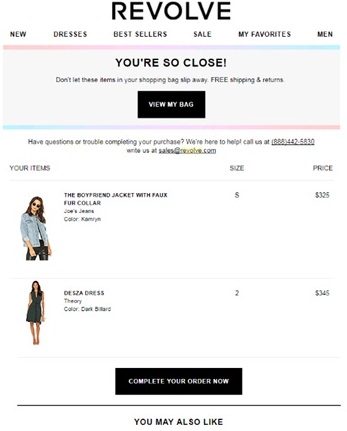
These emails can help recover your business’s lost sales by capitalizing on your customer’s expressed interest and ensuring they don’t forget your eCommerce store.
A great example is the brand Black Halo, which generated around 16% of its email marketing revenue by optimizing abandoned cart emails and messages.
So, how can you optimize your abandoned cart email strategy before your customers call it quits with your business without even opting for your services? Let’s see how!
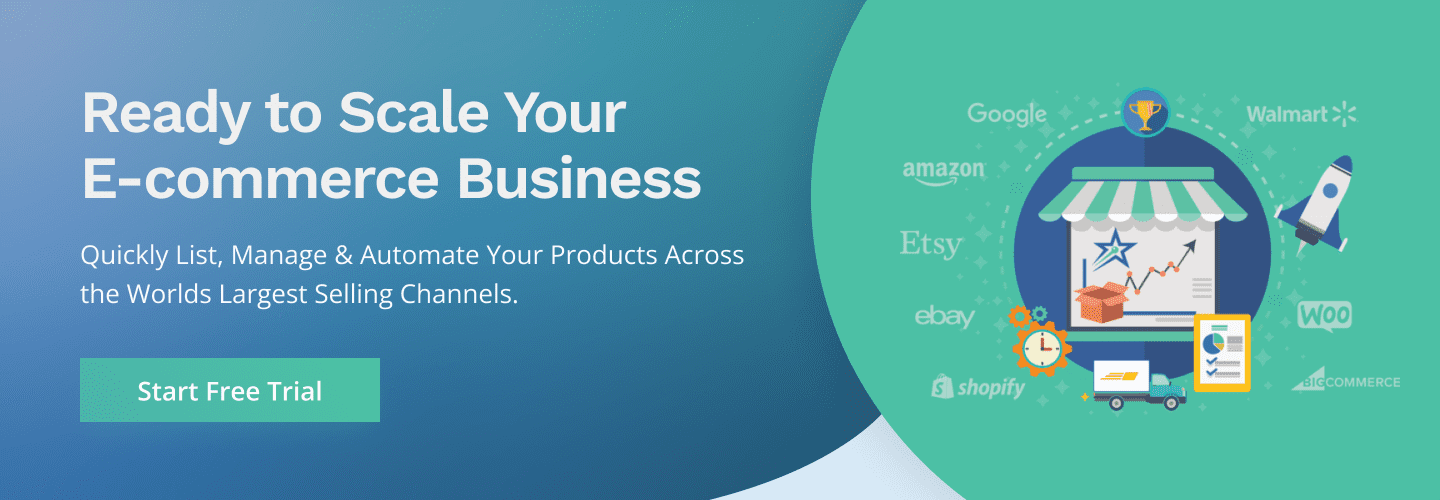
7 Best Practices for Abandoned Cart Emails
In 2020, 34% of customers who clicked on the abandoned cart emails successfully completed the purchase.
Even you can do the same for your eCommerce store and regain lost customers by implementing these best-abandoned cart emails practices.
1. Highlight the abandoned products for personalization
Reminding your customers of the products they abandoned along with their size, color, image, pattern, and more is a brilliant way of making them realize what they have left behind.
After all, your customers might not always remember the products they added to their cart, especially if they added in numbers.
Address your customers and include the abandoned products by highlighting their USPs, features, price, size availability, etc. This will help make your email copy personalized and high-converting.
For example, Ugmonk entirely focuses on personalization in their abandoned cart emails to make customers feel like the designer is directly reaching out to them to offer assistance
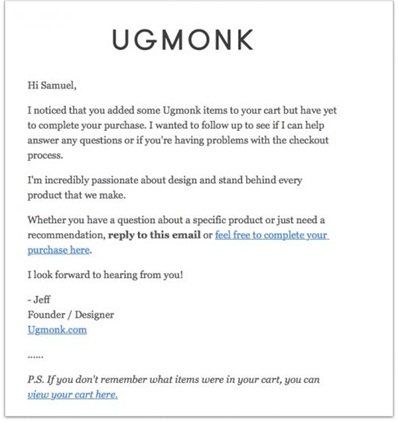
In addition, Google personalizes their abandoned cart emails by adding the customer’s cart within the email, including the product’s features and urgency for faster and higher conversions.
2. Leverage sales principle to encourage action
Your abandoned cart emails should be highly conversational, interactive, and valuable—focusing more on your customers and their problems than your products.
An interactive and purposeful email copy convinces customers to bounce back to their abandoned cart and make the purchase. But how can you do this?
Use sales principles while creating your emails to encourage customer actions. Here are some tips to help you with the same:
- Use high-converting and personalized abandoned cart email subject lines by mentioning the customer’s name.
- Use discounts and offer incentives to tempt your customers back.
- Use sales psychology by adding elements like FOMO, limited offer, grab it before it’s gone, etc.
- Focus on selling only a single product from the cart, preferably a bestseller or one with the highest ratings.
The brand Drop ensures maximum conversions through their abandoned cart emails by creating urgency through phrases such as “ends in 19 days”, followed by a CTA.
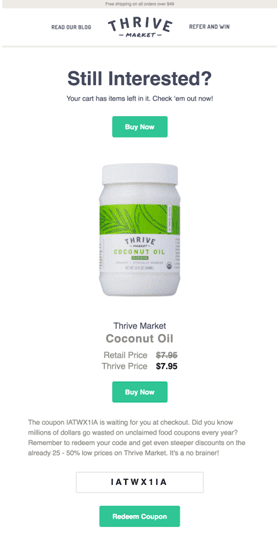
In addition, to encourage immediate action, Thrive Market implements a brilliant sales principle by adding a coupon code and showing their customers how much they will save if they purchase the items from their cart versus from other retailers.
3. Include a persuasive call-to-action (CTA)
Your abandoned cart email’s CTA is arguably the most critical part of the mail. It’s the key to transform visitors into valuable customers, leading them through the sales funnel with clear instructions about the next action to be performed.
Making your customers click on the email is one thing, but directing them to complete the transaction through an effective CTA is what will serve the purpose of your abandoned cart email.
So, after showing your customers what they have abandoned, you can persuade them to complete the transaction through bold and attractive CTAs like:
- Return to cart
- Resume your order
- Claim my item.
- Finish checking out
Mango uses not one but three CTAs- ‘Continue Shopping’ and two ‘Complete Your Purchase’ with clear urgency and product’s image and details within their emails, a great strategy to make readers think and take action.
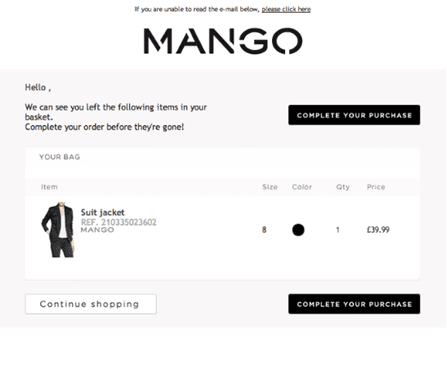
4. Include social proof through customer reviews and product’s statistics
Considering the frequent cases of internet scams, customers today are becoming increasingly aware and careful before purchasing, especially first-time visitors.
So, to win their trust, you need something more convincing, like social proof to convert skeptical shoppers into loyal customers. When your customers see other buyers talk about your products’ features, benefits, and quality, it can positively influence their purchasing decision and encourage them to complete their purchase.
You can include reviews, ratings, and testimonials in the abandoned checkout email to make your products more appealing to prospective customers.
Adidas is an excellent example of a brand sending abandoned cart emails with social proof to entice customers back to complete the purchase.
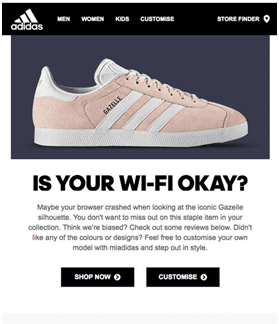
5. Use analytics to deduct the perfect timing for sending an email sequence
According to Experian’s published studies, there is 2.4 times more possibility for customers to complete the purchase if they receive multiple abandoned cart email follow-ups than a single email.
However, getting the timing of your abandoned cart emails right is a totally different ball game.
Generally, here’s how the sequence of your abandoned cart email follow-ups should look like:
- First email: within 40-60 minutes of cart abandonment.
- Second email: within 24 hours of cart abandonment.
- Third email: within 3-4 days of cart abandonment.
- Fourth email (optional): within two weeks of cart abandonment (suggesting alternate products recommendations instead of cart recovery).
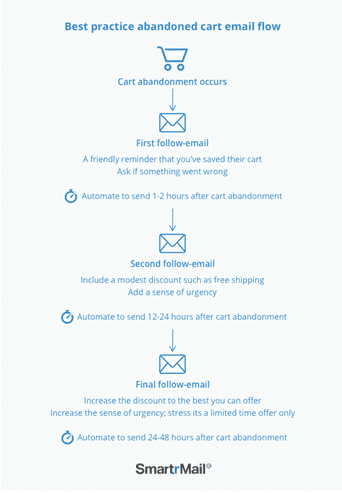
Brands such as Dyson and Mailchimp follow up with their customers with multiple abandoned cart emails while also incorporating some A/B testing to analyze the exact sequence of follow-up emails.
6. Use rich media to make the email visually appealing
Another way to influence customers who have abandoned their carts is to add rich media and images of the items they have left behind. Just including the product’s name is not enough anymore.
Adding attractive and large product images adds a visual element to the emails, recreating what the customers felt when they first saw the product and added it to their carts.
You can also include images of your customers using the products for a further nudge.
This is how Pacsun uses the product’s image to influence and reinforce the customer’s decision to purchase the product.
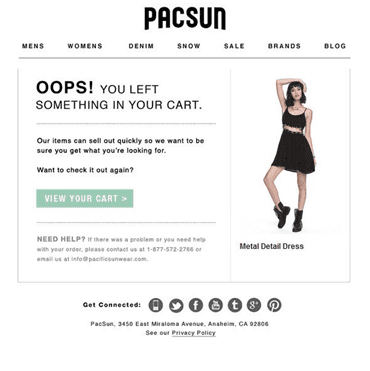
7. Do A/B testing and lead with data findings
In the end, it’s all about trial and error and going with the solution that fulfills the purpose— getting your customers back to complete the transactions.
A/B testing allows you to compare two different abandoned cart emails to analyze which one performs better and increases conversions.
You can A/B test several elements, including the abandoned cart subject line, email follow-up sequence, and CTAs, to see if they respond to discounts or humorous text. This testing will allow you to optimize your abandoned cart emails to get the best results.
For example, Constant Contact performs A/B testing to determine the right follow-up timeframe series for maximum conversions.
7 Abandoned Cart Email Best Practices to Win Back Customers: Final Thoughts
The absence or lack of an effective abandoned cart email strategy results in loss of potential customers and business revenue.
To avoid cart abandonment in the first place, focus on managing high product prices, a seamless checkout process, easy returns, unexpected costs, low shipping charges, and more.
However, for those customers who have abandoned their carts already, use the abandoned cart email best practices, which has helped several brands recover lost customers and increase their business revenue, as we saw in this article.
And as you implement these practices, keep testing and experimenting to ensure your customers not just open your abandoned cart emails but also click on the CTAs and complete the transactions.
Remember, abandoned cart email recovery is a gradual and step-by-step process. You may not hit the target right away, but consistent testing and strategizing can help you analyze what works best for your customers to get them back to their carts and complete the checkout from our dropship platform.


